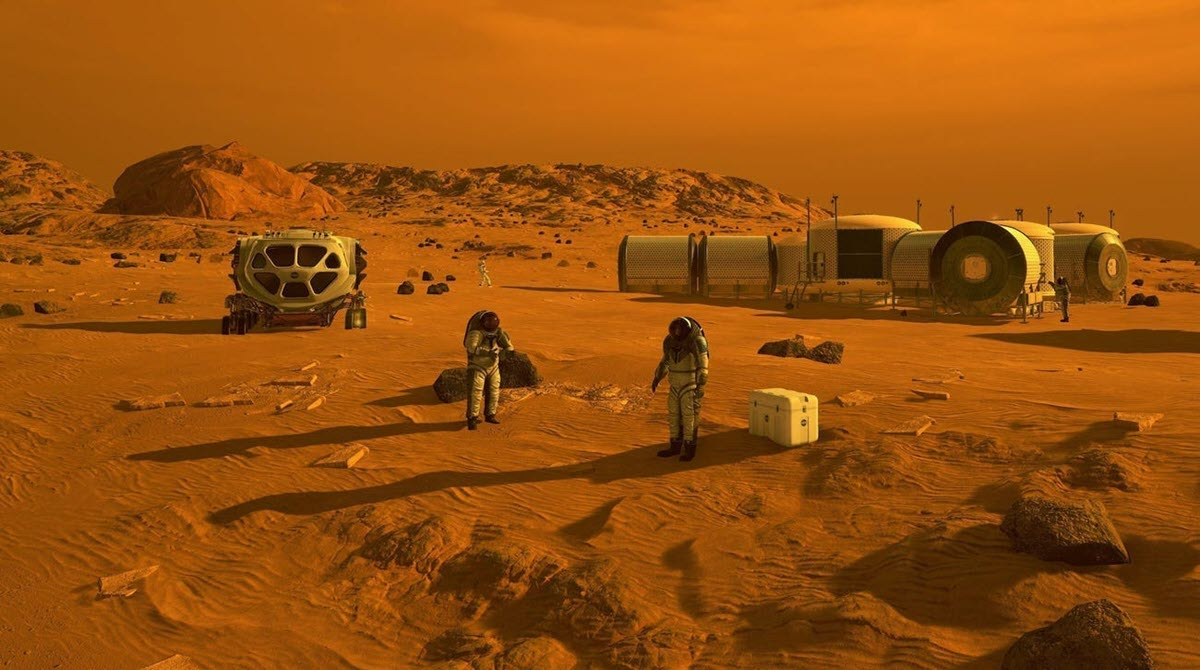Life on Mars possible? Bacteria make the soil on the red planet more fertile
It is the clover that showed a US research team that the addition of bacteria also makes the Martian soil more fertile. Plants grow much better. Hollywood knew it before.
At the latest when Mars is colonized, most of the food must also be produced there. That is why scientists have been researching so-called astro agriculturals for years. This is a difficult field of research because not all parameters of plant growth can be simulated on earth.
But one thing is clear: It doesn’t work as easily as it was in the Hollywood film “The Martian” with Matt Damon – but it is remotely similar. In the film, astronaut Mark Watney (Damon) planted potatoes in the Martian soil, added bacteria from a terrestrial soil sample and fertilized the plants with his droppings. He could live on that.
Experiments at the Dutch University of Wageningen had recently shown that agriculture on Mars with simple greenhouses would not work. The researchers had grown plants in a Mars analogue soil produced by NASA on the basis of Hawaiian volcanic sand and initially achieved good harvest results. But then they exposed the plants to radioactive radiation such as that found on Mars. This reduced the growth of biomass by almost half. Research is now being carried out on underground cultivation sites.
A team of scientists from Colorado State University in Fort Collins in the US state of Colorado has also been researching astronomical cultures for several years. Their most recent work was about showing how a possible harvest could be optimized. In doing so, she ignored problems such as radiation exposure and others and focused solely on the soil and its nutrient content as influencing factors.
After earlier studies, including the experts from Wageningen, it was already clear that plants could in principle thrive in Mars regolith, i.e. the soil there, the US researchers looked for a way to supply them with the vital nutrient nitrogen. They found it in nitrogen-fixing nodule bacteria of the genus Sinorhizobium meliloti.
Such bacteria colonize the roots of numerous plant species on earth. They were first detected on clover, but can also be found on the roots of peas and beans. The bacteria bind nitrogen from the atmosphere and then make it available to the plant in a soluble form. The plant in turn reciprocates with the return of substances that the bacterium needs to live.
Clear differences: left with nodule bacteria, right without. (Photo: Harris et al., 2021, PLOS ONE, CC-BY 4.0)
In fact, the Colorado team saw an improvement in plant growth in the regolith. The shoots of plants with root bacteria were 2.5 times longer than those without bacteria. And the biomass of shoots and roots even more than doubled.
It turned out that the bacteria also enter into a symbiosis with the plants in the Martian soil. Other limitations of the Martian soil, however, meant that the number of root nodules formed was barely a quarter of the usual amount in the soil.
Accordingly, it was not possible to enrich the regolith with nitrogen beyond the individual plants. However, this should also have something to do with the low nitrogen enrichment in the Martian atmosphere. While the earth’s atmosphere has 78 percent nitrogen, this value is a thin 1.2 percent on Mars.
The research team who published the results of their work in the science journal Plos One published, is still satisfied. The evidence alone that microbes can also form symbiotic connections in regolith is promising. Now more studies would have to be done. After all, we know from studies of the Mars rovers that the regolith lacks a large number of other micronutrients, such as copper, boron or molybdenum.
The researchers see no alternative to their work. Due to the steadily growing environmental problems on our home planet, mankind must prepare for not being able to survive much longer as a “one-planet species”. There is therefore no way around a functioning alien agriculture in the long term.



